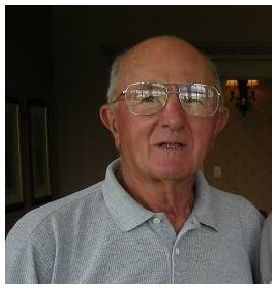June 2008 Article Wild Cards Archives:
Tennis Server
|

 |
by Tony Severino Certified Instructor 4A Professional Tennis Registry
Drills! Drills! Drills!
Not the "Hut-toop-threep-fowp!" type. These are tennis drills. Their purpose might be the same, to develop a conditioned response to a recurring situation, but the cadence differs.
At the PTR International Tennis Symposium on Hilton Head Island this past February over 90 demonstrations/lectures were given by top teaching tennis professionals. During the week-long symposium, 36 of them featured a plethora of drills. All had useful aspects to them and presented new wrinkles to an audience of experienced tennis professionals who can always use another drill. This audience numbered over nine hundred attendees, many of them certified tennis instructors, but not all. You do not have to a certified instructor to attend the symposium, nor even a member of PTR. You need only an interest in learning more about tennis from the top teachers in the business.
During those 36 presentations variations of over 300 drills were offered, each addressing a different aspect of tennis, everyone with a specific purpose.
Think that's a lot? Those were just a sampling.
Over from England, Rob Antoun, in his on-court presentation offered 25 drills which focus primary on the attributes of the women's game. Great stuff. Rob is Manager of the Junior Program at Sutton Tennis Academy in London. He is also co-founder of Pro Tennis Solutions, a company which provides training courses and resources for coaches.
His book, "Women's Tennis Tactics," incidentally the only book written about teaching women's tennis, provides 75 drills, most aimed at ladies tennis development.
During the featured annual PTR Drill Exchange instructors volunteer to present their favorite drills. Thirteen different drills were presented, each one having variations which makes the possibilities exponential.
Drills usually have a game-related purpose. There were drills to get ready for competition; cardio tennis drills, fun drills to develop skills in kids under 10, drills to teach tactics to juniors, drills to train the brain to produce winning results, Top Ten Drills for Advanced Players, All Star Drills, a Serve, Rally and Score drill, and a footwork drill by Chuck Kriese, to name just a few varieties. To try to detail any of them would be as to write a book. Where would one begin?
I could start with a drill from Master Professional Ken DeHart. His CD: "Skills, Drills and Games for Beginning Players" has one called "Double Touch." Cooperating partners bump the ball off their racquet to bounce in front of them, then return it for their partner to do the same. This drill has triple aims; seeing the ball, foot movement and ball control.
Another would be from Master Professional Joe Dinoffer, who suggests touching the butt of the racquet to the ground to require the body to get low on volleys.
Many other "why didn't I think of that" ideas, like practicing with three serves instead of two, to focus on a second serve that resembles the first.
Then there's Bill Mountford, returning from a coaching stint in England, who offers a full CD of drills.
And so many more with useful tips.
The question becomes: Where does one end?
Tennis drills can be grouped into three general categories:
Drills, drills, drills.
Most presented were about various aspects of playing the game and playing techniques, but not all. Some exercised fitness routines in drill form, on-court movement and the physical aspects required of better playing.
Certainly playing is important. It does have an important role in development. But first things first, and that means building a playing basis with drills. Playing does not provide enough repetitions of a given shot necessary to build one's confidence in it.
Chuck Kriese, 30 years coach of Clemson University, is one of the winningest coaches in college tennis history. In his latest book, "Coaching Tennis," he notes "philosophers, psychologists and teachers all testify to three areas of human development critical to growth: physical, mental and emotional." In his book he divides tennis training into thirds: 1/3 Physical, 1/3 Mental and 1/3 Emotional.
Taking a cue from this structure, we might place the various types of drills under these three divisions:
Hilton Head Island is not the only place to find drills. There are a plethora of books and CDs available. PTR even has an instruction manual on Backboard Drills for Individuals and Groups.
If you can't find a partner to hit with, then any solid wall will give you workout you won't forget. And remember, you can drill on every shot with a backboard; every shot, forehands, backhands, serves, volleys, overheads, drop shots, all of them. The only time you'll beat the backboard is when there are no witnesses.
Drills, then, are the building blocks to a functionally sound tennis game. It's the game you take with you into the tough matches, where, as Chuck Kriese says, "regular stuff is good enough." It should be.
So, all together now; hut-toop-threep--- Oops!
Sorry! Wrong drill.
If you wish to provide a comment to the author of this Wild Cards column, please use this form. Tennis Server will forward the comment to the author.
1998 - 2003 | 2004 - Present
This column is copyrighted by the author, all rights reserved.
|



October 2022 Tennis Anyone: Patterns in Doubles by John Mills. September 2022 Tennis Anyone: Short Court by John Mills. |
 You will join 13,000 other subscribers in receiving news of updates to the Tennis Server along with monthly tennis tips from tennis pro Tom Veneziano.
You will join 13,000 other subscribers in receiving news of updates to the Tennis Server along with monthly tennis tips from tennis pro Tom Veneziano. 